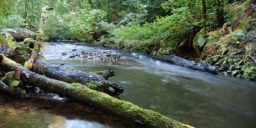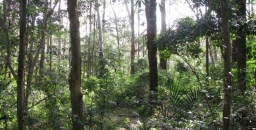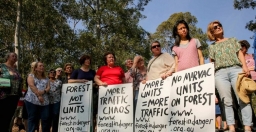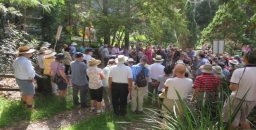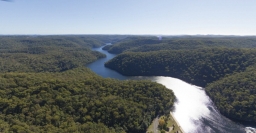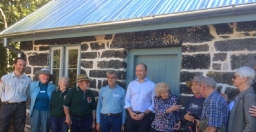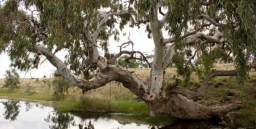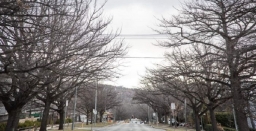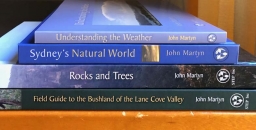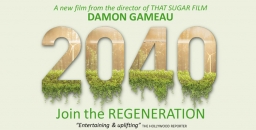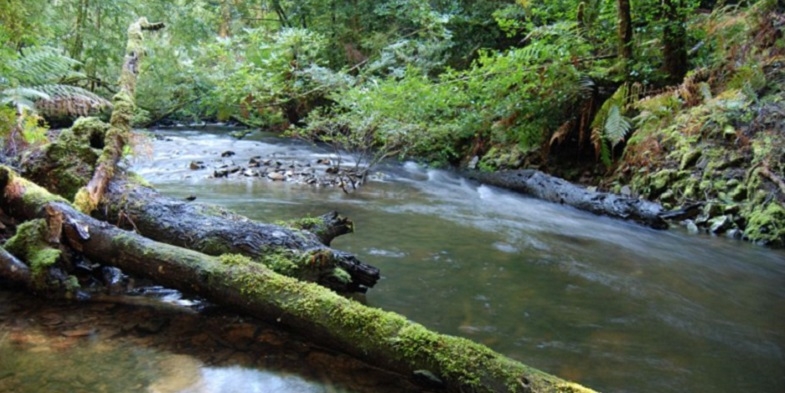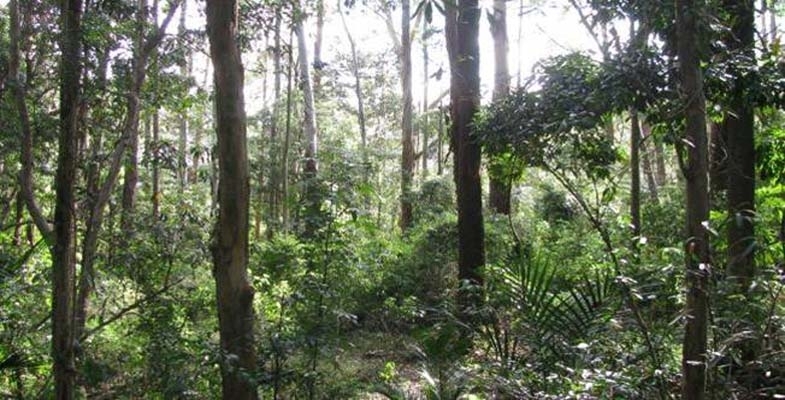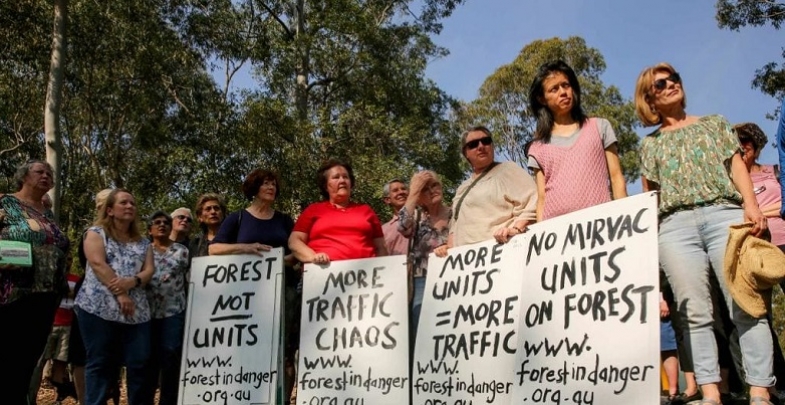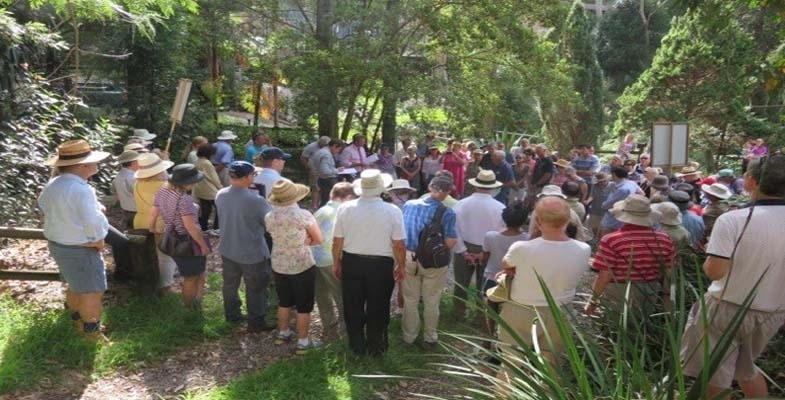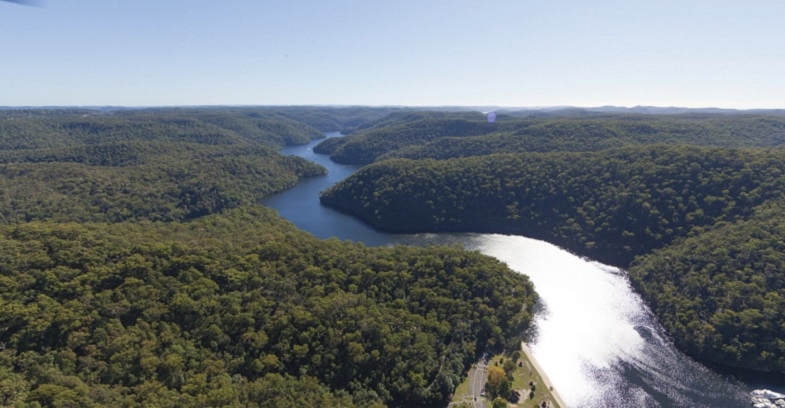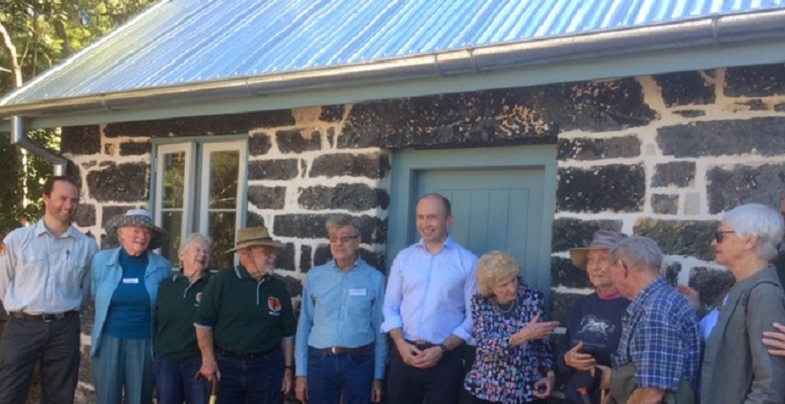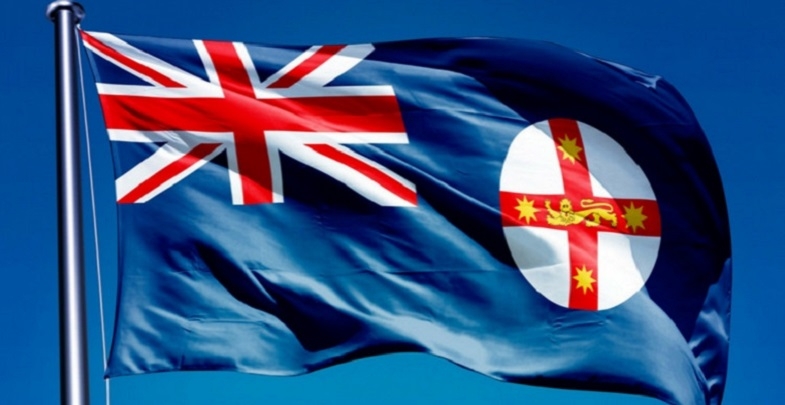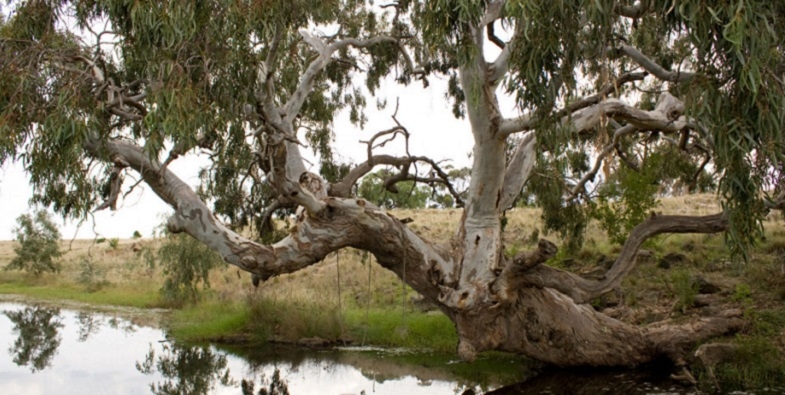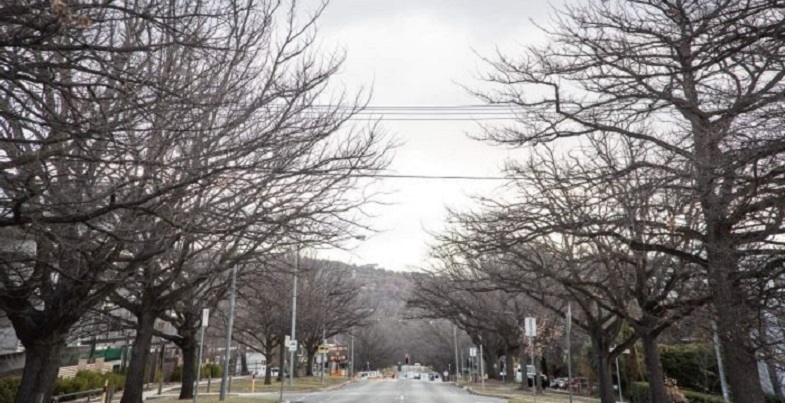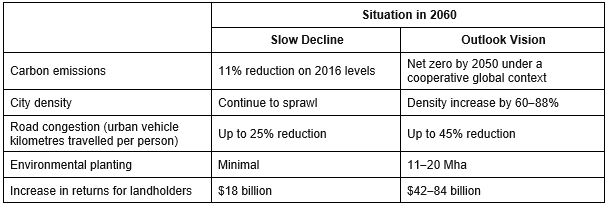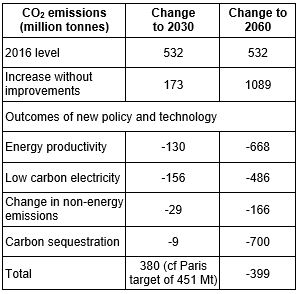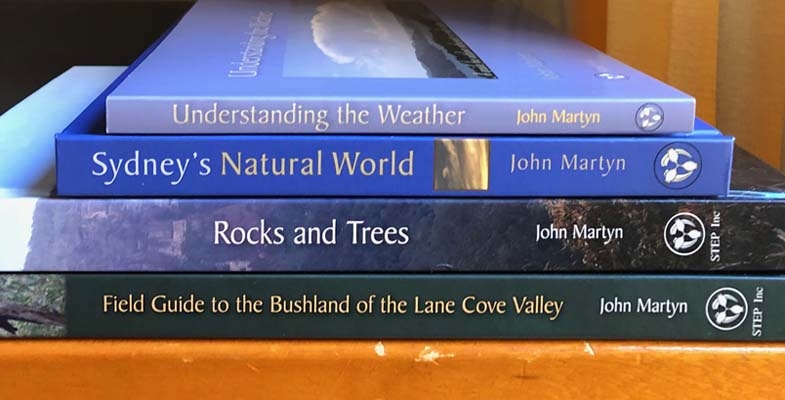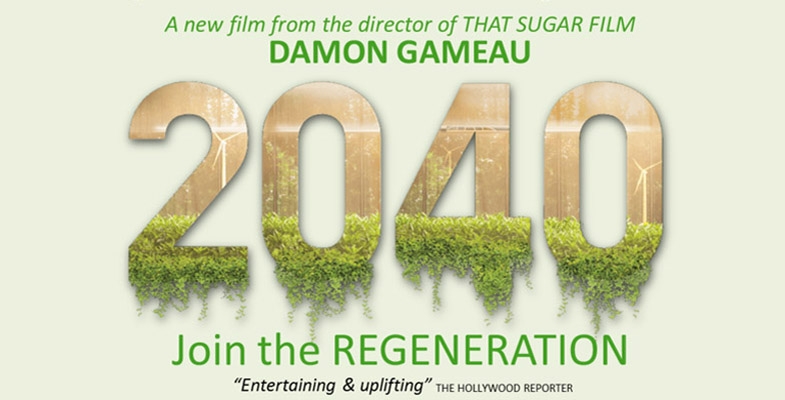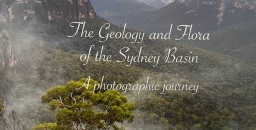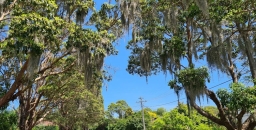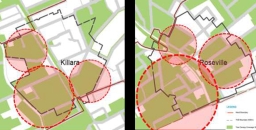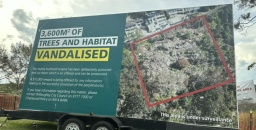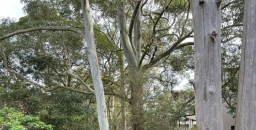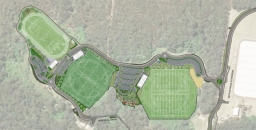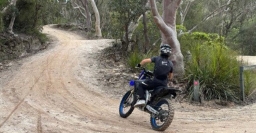STEP Matters 202
- Default
- Title
- Date
- Random
- Hornsby Shire Climate Action has set up an online petition calling on Hornsby Council to declare a climate emergency. Declaring…Read More
- From July the management of the Streamwatch program was taken over by the Greater Sydney Landcare Network. This is a…Read More
- NSW Forestry Corp has lodged a proposal to sell off parts of the Cumberland State Forest for housing subdivision. More…Read More
- The Office of Environment and Heritage has alerted the Hills Council to the fact that the presence of Blue Gum…Read More
- Good news! The Land and Environment Court has upheld the decision by the Northern Beaches Council and Sydney North Planning…Read More
- Hornsby Council is undertaking a four-month review at a cost of $70,000 into potential rezoning and acquisition of land in…Read More
- Ku-ring-gai Chase National Park is one of the most popular national parks in NSW, with over 3 million visits each year.…Read More
- On 25 May the Friends of Lane Cove National Park put on a special celebration. They were founded in 1994…Read More
- Since the re-election of the Berejiklian government there has been a mixed bag of news in relation to the environment.…Read More
- River red gums, Eucalyptus camaldulensis, are among the most iconic of Australia’s eucalypts. They are the most widely distributed of…Read More
- There is lots of research demonstrating the benefits of trees in urban areas. Not only do they camouflage the grey…Read More
- CSIRO Futures released a report in June on Australia’s future in the next 40 years, called Australian National Outlook 2019…Read More
- This is a great opportunity to do some Christmas shopping. We have decided to reduce the price of our books…Read More
- STEP is supporting the screening of the film 2040 at Roseville Cinema. Booking is essential. We need a minimum of…Read More
Let’s Declare a Climate Emergency in Hornsby
Hornsby Shire Climate Action has set up an online petition calling on Hornsby Council to declare a climate emergency. Declaring a climate emergency is a vital step in building support for the very large changes required to restore a safe climate.
Once declared, the council must enforce policies that will reduce emissions as much as possible. They must also educate the public about the state of emergency. Click here to sign the petition.
Good News for Streamwatch
From July the management of the Streamwatch program was taken over by the Greater Sydney Landcare Network. This is a great relief. As previously reported there was a risk that this valuable program would be discontinued because NSW government annual funding of a measly $100,000 was uncertain. Streamwatch, with almost 300 volunteers, plus 30 years of data has to have a paid coordinator.
Data will be migrated to the SEED platform – an open government repository of environmental information hosted by the environmental cluster within the Department of Planning, Industry and Environment. The Landcare Network is delaying taking on new volunteers until the new testing system is finalised.
This is a great citizen science project that has given school, children community groups and individuals a meaningful way of getting out into the environment.
Now the Cumberland State Forest is Under Threat
NSW Forestry Corp has lodged a proposal to sell off parts of the Cumberland State Forest for housing subdivision. More critically endangered forest would be cleared. Not just Mirvac but now NSW Forestry Corp want to decimate some of these forests in West Pennant Hills.
Documents have been lodged with the Hills Council applying for the rezoning of two areas that would then be the subdivided for low density housing. They claim the land is surplus to their needs but what about the needs of the people of Sydney to keep existing green space?
An on-site meeting was held with Greens MP David Shoebridge on 11 August.
For updates on the campaign go to www.facebook.com/pg/ForestinDanger.
Mirvac Development a Threat to Critically Endangered Ecological Communities
The Office of Environment and Heritage has alerted the Hills Council to the fact that the presence of Blue Gum High Forest and Sydney Turpentine Ironbark Forest, both critically endangered ecological communities are listed as potential ecological communities that meet the principles and criteria for serious and irreversible impact as defined under the Biodiversity Conservation Act. Under this act development consent cannot be granted to proposals that impact on serious and irreversible impact entities.
The Office of Environment and Heritage and an independent ecologist have identified large areas of Blue Gum High Forest within the proposed development footprint and the bushfire asset protection zones.
The Forest in Danger group does not believe that the planning proposal 1/2018/PLP can be approved in its current format. The draft development control plan, the planning proposal and the voluntary planning agreement would have to be re-exhibited.
For more details see previous issue of STEP Matters or the Forest in Danger Facebook page.
Update on the Bayview Golf Course Development
Good news! The Land and Environment Court has upheld the decision by the Northern Beaches Council and Sydney North Planning Panel to refuse the seniors housing development application on part of the Bayview Golf Course land. The site compatibility certificate had been granted by the Department of Planning to allow a development, but the council still had to approve the details of the development approval. Council knocked back the application on the grounds that its size was excessive and its impact on local biodiversity.
The developer wanted to amend the site compatibility certificate so that the council would not have grounds for refusal. The site compatibility certificate has now expired. The developer will have to start from scratch if they want to try again.
Byles Creek Valley should be Protected
Hornsby Council is undertaking a four-month review at a cost of $70,000 into potential rezoning and acquisition of land in Byles Creek Valley that is currently unprotected. Council has come to this conclusion in all reviews and reports in the past.
In 2014 Hornsby Council made a very comprehensive submission to the NSW government pushing for acquisition of Byles Creek Valley land in 2014. In this document council’s expert environmental team stated that:
The Byles Creek catchment has been identified as environmentally significant due to the unique environmental values of the area … The preservation of these lands provides connectivity between the significant vegetation corridor along Byles Creek and Lane Cove National Park. The connectivity of this corridor ensures the ability for species to disperse between reserves and the national park and for the transferral of genetic material. The conservation value of this corridor is further emphasised by its inclusion as a core area in the NSW Biodiversity Investment Opportunities Map as part of the NSW government’s Green Corridors Program.
The valley is noted for the high quality of the water in the Creek that flows into the Lane Cove River. It is used as a reference standard for water quality in the shire.
As a member of the Powerful Owl Coalition, STEP strongly supports the protection of the valley as it links with breeding habitat for the Powerful Owl.
Our thanks to the Byles Creek Valley Union for this information.
Ku-ring-gai Chase National Park Plan of Management
Ku-ring-gai Chase National Park is one of the most popular national parks in NSW, with over 3 million visits each year. The existing plan of management for the park was written in 2002. Since that time there has been a steady increase in visitors coming to the park, new recreational uses have become popular, information about the values of the park has improved and new approaches to managing fire and pests and weeds have been developed. The NSW National Parks and Wildlife Service (NPWS) is preparing a new plan of management for the park and island nature reserves.
As part of preparing the new plan of management NPWS has released five discussion papers exploring some of the key management themes that will be included in the new plan:
- aboriginal cultural values
- natural, visitor experience and shared heritage values
- recreational activities
- visitor destinations
- leases licences and consent
NPWS is keen to hear what the community has to say about future management of the park.
Comments close on 15 September 2019. Click here to contribute your ideas and comment.
There will be other opportunities to provide input to the plan of management when the draft plan is exhibited for public comment.
Friends of Lane Cove National Park Celebrate 25 Years
On 25 May the Friends of Lane Cove National Park put on a special celebration. They were founded in 1994 after major bushfires burnt out large areas of the park and exposed the bushland to weed invasion. They have been working for 25 years to restore the bushland of Lane Cove National Park together with the NPWS staff.
The occasion was also the official opening of Jenkins Kitchen after its restoration using a NSW government Heritage Near Me grant and resources from the Friends, their time and money, to restore the interior and set up displays of historical and wildlife items. The building built in 1855 is believed to be the oldest in Ku-ring-gai.
NSW Government News
Since the re-election of the Berejiklian government there has been a mixed bag of news in relation to the environment. Here are some brief points.
New Environment Minister
We welcome the appointment of Hornsby MP Matt Kean as Minister for Energy and Environment. He has made promising statements emphasising the importance of national parks and the need for new action on climate change and threatened species. However his power over the short-sighted members of cabinet is uncertain.
Changes to the Office of Environment and Heritage
The Office of Environment and Heritage is no longer a separate entity - it now comes under the Department of Planning, Industry and Environment. The level of influence that staff from the former Office of Environment and Heritage will have in the future is uncertain.
More National Park Funding Cuts
The abolition of the Office of Environment and Heritage makes it difficult to assess the level of funding for national parks under the budget relative to previous years. The ABC has reported that, in the latest budget, $80 million is being cut from NPWS.
In a statement to the ABC, the government said those cuts would come through more efficient work practices in the department. How can the department be made more efficient after the $121 million cut in the 2016–17 budget that lead to about 100 ranger positions being lost? We believe there is more restructuring of front-line staff to come.
Local Green Spaces Funding
The budget included $9 million to improve open space in Frenchs Forest with new green connections, walking tracks and bike paths linking the local community to nearby bushland corridors. This is a development to watch out for. Will there be more mountain bike tracks?
Land Clearing
The Audit Office released its assessment of the administration of the land clearing laws in June. The media release included this statement:
The processes supporting the regulatory framework are weak and there is no evidence-based assurance that clearing of native vegetation is carried out in accordance with approvals.
Maps of vegetation that landowners need to operate under the new legislation are still not available.
It was announced recently that the government will not be pursuing prosecutions of landowners who have cleared land illegally under the Native Vegetation Act that applied prior to the Biodiversity Conservation Act in 2018. This new act provides for a lot more self-assessment so the past clearing may have been legal under the new law.
Data show massive increases in land clearing over recent years. The data are often disputed on the basis that some clearing is of woody weeds or regrowth. Is that a reasonable excuse? There is no big picture data to help determine whether the regrowth should be encouraged, not cleared.
There are also severe concerns with the renewed Regional Forestry Agreements and the attitude to logging in native forests, particularly koala habitat. Detail about these issues is covered by the Nature Conservation Council.
No matter what data are revealed the area of native vegetation needs to be increased significantly, not decreased, to halt the trend of land degradation and species extinction.
Feral Horses in Kosciuszko National Park
A statewide campaign to protect Kosciuszko National Park from destructive feral horses has forced the government to debate its controversial Wild Horse Heritage Act. This will occur on 22 August.
Meanwhile the number of horses is increasing and the damage to the fragile mountain ecology worsens as the government has suspended the removal program.
Raising Warragamba Dam Wall
The proposal to raise the Warragamba Dam wall by 14 m may have hit a couple of stumbling blocks:
- a UNESCO world heritage committee says that the proposal could threaten the listing of the Blue Mountains as a World Heritage area
- modelling of the reduction in flood risk shows the higher wall will have very little benefit
The government is currently preparing an environmental impact statement. Some of the work so far was leaked. It revealed that about 1,300 ha of the world heritage area would be permanently damaged including significant aboriginal cultural sites. The UNESCO committee has asked the government to consult with them before making the final decision. Federal government approval is also required because of the world heritage listing.
It has been stated that the objective of the proposal is to reduce the impact of flooding of the Hawkesbury-Nepean floodplain by holding back water after heavy rainfall for longer. However some of the charts from modelling the effects of the wall raising prepared for the EIS were leaked to the Sydney Morning Herald.
As Figure 1 shows there is very little change in the water outflows during a likely flood event.
In the case of a major flood such as the 1867 flood that is the highest recorded, the picture is similar. This level is believed to be equivalent to a one-in-500 year event (see Figure 2).
The reason for the small reduction in flooding is that there are major rivers that flow into the Hawkesbury-Nepean system below Warragamba Dam such as the Nepean, Grose and Colo. This compounded by the flow downstream being held back at a number of pinch points where the river valley narrows.

Figure 1

Figure 2
The River Red Gum is an Icon of the Driest Continent
River red gums, Eucalyptus camaldulensis, are among the most iconic of Australia’s eucalypts. They are the most widely distributed of all the eucalypts. They grow along rivers, creeks, waterways and flood plains where many Australians like to picnic, so most of us get to know and love them.
Formerly known as Eucalyptus rostrata, the species was one of the first eucalypts encountered in parts of Australia by European settlers. Curiously, the name camaldulensis comes from the Italian monastery of Camaldoli near Naples, where a specimen grown from seed in a private garden was given the name Eucalyptus camaldulensis in 1832. No one knows how the seed got to be there!
River red gums can be very large spreading trees with huge trunks more than 5 m around. In parts of Australia, such as along the Murray River, they can be very erect trees reaching more than 45 m tall.
Most specimens have smooth bark with a mottling of multiple colours ranging from creams to orange and red, but there may be a skirt of fibrous grey bark for the first few metres of the base. They are called river red gums because they grow along rivers and their wood when freshly exposed is a bright red; almost blood-coloured.
River red gums have been used by Indigenous people for canoes, bowls, shields, and other utensils. The wood is red is because it contains very high levels of chemicals such as polyphenols, which are a natural antibiotic when combined with air.
These chemicals not only protect the living tree from disease and some pest attacks, but make the timber very durable. These chemicals meant river red gums were used for medicinal purposes by Indigenous people. The wood has been widely used for railway sleepers, fence posts, and piers and wharfs where durability and water resistance are desirable. They have been widely planted overseas and in some countries pose a serious weed problem.
The trees can have very long lives, and may reach 1,000 years of age. They grow very rapidly when conditions are favourable and so become large trees quite quickly. But as they get older it is very difficult to age them without damaging the tree and putting it at risk of disease and decay. So their ages are estimated, as no one wants to be responsible for killing a grand old tree just to confirm its age!
Older specimens almost always develop large hollows, which can take centuries to form. The hollows provide refuges for birds, mammals and reptiles. The nesting sites are often raucously defended by brightly coloured parrots. The trees and the nectar from their small white flowers are also very important for honey production – a large tree in full flower over the warmer months can attract so many bees that the whole tree can be heard humming from many metres away; it’s a wonder the tree doesn’t take off.
At certain times of the year, often during summer, river reds can be very heavily grazed by insects to the point where their leaves are skeletonised. The trees look as though they are about to die, but they are very resilient and a few months later most are back to a full and healthy canopy. Another insect, the psyllid, also feeds on and skeletonises the leaves. It has a sweet, waxy covering called a lerp that protects the vulnerable insect nymphs beneath. Some Indigenous groups scrape off the lerps, roll them into a ball, and eat them like a lolly.
Surviving Floods and Driving Rain
Any tree that can live for a millennium must be adaptable, so like some other eucalypt species, river red gums can shed up to two-thirds of their foliage when soils dry out during a drought, which reduces water demand and prevents the trees from wilting. This shedding often causes people to complain about the trees when they grow in towns and cities, but when the rains come a few months later they rapidly produce new leaves and are soon once again in full canopy.
River red gums can tolerate immersion in flood waters for up to nine months. They do this by having extensive roots, some of which contain a spongy, air-filled tissue called aerenchyma that allows for the accumulation and transport of much-needed oxygen in waterlogged soils. This adaptation to stressed soils also means river red gums can do quite well in disturbed urban soils when the urban sprawl impinges on their natural domain.
River red gums readily seed after flooding events and great numbers of young trees may germinate. However, relatively few survive to maturity due to competition from other red gums, other trees, and weeds. They may also struggle to survive in some places due to a lack of water.
Because river reds occur in some of the driest and harshest parts of the Australian mainland, you might think they are very efficient users of water. However, nothing could be further from the truth. The trees can have very deep, spreading and searching root systems, which tap into subterranean water, even if the water is many metres from the trunk. They are luxury water users with very little capacity for water use control. If water becomes really limiting, they simply wilt.
Territorial Trees
E. camaldulensis produces a water-soluble chemical that is washed from its leaves by rain. These chemicals inhibit the growth of other plants, including river red gum seedlings, under the canopy. This phenomenon is called allelopathy, and along with a dense canopy inhibits plant growth under the trees. These chemicals are washed from the soil by flood water, which makes way for the germination of seedlings after floods. This is a wonderful mechanism that ensures seedlings do not germinate when conditions are dry and where they would compete with the parent tree for limited water, but germination is facilitated when there is plenty of water and soils are wet.
Some people think river red gums are dangerous because they shed large limbs without warning on calm, still, summer days. There is no doubt this does happen, but there is no clear evidence they shed limbs more often than other species.
The problem is complex, because they tend to grow everywhere people want to go. They provide shade along waterways on a hot, dry continent. In going to places where the trees grow, people tend to compact the soil with their vehicles and footpaths, which can be causes of limb shedding. The compaction of the soil affects soil moisture and aeration, which can lead to limb shedding.
In other contexts such as farms where limbs are shed, many old river red gums are growing in highly disturbed or changed ecosystems. Furthermore, many of these remnant specimens are often stressed and getting older and so more prone to shedding.
River red gums trace the watercourses of mainland Australia, and are easily seen from aeroplanes as you cross the continent. They connect the continental fringes with its arid heart. Their lives can span many human generations and it is nice to think that the majestic old trees that pull at our heartstrings have done the same to previous generations and, if we and they are lucky, will continue to do so for generations of Australians yet to come.
This article appeared in The Conversation on 12 July. It is written by Gregory Moore, Doctor of Botany at Melbourne University.
Here’s some more information about the importance of river red gum in maintaining healthy landscapes and controlling salinity:
Stands of river red gum are associated with the surface flooding regime of watercourses and related ground water flow. The species is a profligate and opportunistic water user, and this is a contributing factor to the maintenance of water tables at depth. Even without large amounts of empirical data it is clear that loss of large tracts of the species in the Murray River corridor would have a major impact on the hydrology of the system, as well as on vegetation communities and associated biodiversity.
Which Urban Trees can Survive a Changing Climate?
There is lots of research demonstrating the benefits of trees in urban areas. Not only do they camouflage the grey asphalt and concrete of roads and footpaths, they can reduce temperatures and the need for air conditioning in buildings. They also improve the microclimate by retaining moisture in the air and soil and they encourage residents to get out into the community and enjoy beautiful shaded areas.
Tree planting is an effective and efficient way to adapt to climate change. However as climate change leads to higher temperatures and more variable and lower rainfall we need to consider how the popular trees used in urban areas will respond to the changes.
Different species have different levels of tolerance of heat, lack of water and other threats posed by climate change.
Research teams from Macquarie University (including former STEP president Prof Michelle Leishman) and Western Sydney University, have embarked on a project called Which Plant Where. The project is supported by Hort Innovation Australia, the Department of Planning, Industry and Environment and the Australian government. Their mission is to find the best plant species for urban landscapes that will be resilient to climate change.
The project works with the nursery industry to gather evidence on species’ resilience to extreme heat and drought by testing plants to their limits in research glasshouses. This work will inform plant growers and nurseries on how to adapt their business, by identifying the new challenges posed by climate change, as well as selecting diverse ranges of climate-ready species. They advise landscape architects, designers and urban planners about not only the best planting choices, but also how to increase the biodiversity of our cities.
We need to know how our current tree canopy will be affected as well as plan new plantings.
The research team recently published a study (Burley et al) that investigated likely climate change impacts on 176 of the most common tree species planted across Australian cities. The analysis showed more than 70% of these species will experience harsher climatic conditions across Australian cities by 2070.
Some of the most commonly planted trees are unlikely to survive. Conversely, in some cooler climate areas, such as Orange, the number of suitable species may increase. These impacts will progressively worsen as climate change intensifies. A proactive approach is needed to identify new climate-ready species and plantings. Tree species growing in warmer cities are more likely to be affected than those in cooler cities. Some species, such as the golden wattle (Acacia longifolia) or the prickly paperbark (Melaleuca styphelioides) might not make it in northern cities unless we invest precious resources – such as water – to maintain these civic assets. Other species, such as the native frangipani (Hymenosporum flavum) or the tuckeroo (Cupaniopsis anacardioides) will likely become more suitable for planting in southern cities.
Australian cities are blessed with a higher diversity of tree species compared to other cities globally. However, the 30 most commonly planted species make up more than half of Australia’s urban forests. This poses a great risk for our cities. If we were to lose one or two of these common species, the impact on our urban tree cover would be immense. Trees are a long-term investment that will be affected by the very factors that they are meant to mitigate. Consequently, our best insurance is to increase the diversity of our trees.
The study highlights the need for more research:
- which species experience a reduction in growth or, even mortality, during extreme weather events and the duration of any growth reduction
- variation of impacts in different climate zones, for example subtropical areas are likely to experience greater declines in growth than temperate areas
- whether it is feasible with some species to mitigate impacts by providing more irrigation, selective pruning or planting in a more sheltered position
- investigate new choices of species suitable for the urban environment from the huge range of Australian native species
The NSW government announced a plan in February to plant five million trees in Greater Sydney by 2030. They are counting trees planted in streets, parks, backyards, neighbourhoods and schools with an objective of increasing the tree canopy from 16.8% to 40%. Councils can apply for grants for tree planting projects. Individuals can register the trees they plant.
Reference
Hugh Burley, Linda J. Beaumont, Alessandro Ossola, John B. Baumgartner, Rachael Gallagher, Shawn Laffan, Manuel Esperon-Rodriguez, Anthony Manea, Michelle R. Leishman (2019) Substantial declines in urban tree habitat predicted under climate change, Science of the Total Environment 685, 451–462
Australia’s Possible Future in 40 Years Time
CSIRO Futures released a report in June on Australia’s future in the next 40 years, called Australian National Outlook 2019 (ANO 2019).
The report is the outcome of a collaborative project that took two years involving more than 50 leaders from over 20 organisations across industry, non-profit and university sectors, including the National Australia Bank, Shell, Australian Red Cross, Monash University, the Grattan Institute and the Wentworth Group of Concerned Scientists. ANO 2019 uses CSIRO’s integrated modelling framework to project economic, environmental and social outcomes to 2060 under two scenarios in the context of responses to six identified future challenges. The challenges are:
- risks and opportunities from the rise of Asia
- technology development and implementation skills
- climate change and environmental degradation – our response and that of the rest of the world
- population aging
- trust in government and business
- social cohesion
The report concludes that if we resist the changes needed to meet the challenges, essentially business as usual, the outcome is described as the Slow Decline. The alternative scenario of bold action is called Outlook Vision.
In brief some of the environmental outcomes of the two scenarios are summarised in Table 1.
Here is some context to the projections in the assumptions that have been made.
Population Growth
The report had to model a lot of information but the major factor has been taken as a given. They have assumed that population growth will continue on the current high path. Population will be 41 million by 2060 with Sydney and Melbourne growing to 8 or 9 million people and Brisbane and Perth growing to 4 or 5 million. That is an extra 16 million people in 40 years. Our population in 1980 was about 14.5 million. So by comparison the increase in the past 40 years was about 11 million. CSIRO expects this growth to be accommodated within our finite land and ecosystems.
It is very sad that no mainstream organisation is willing to publicly countenance a reduction in population growth and demonstrate the implications this will have for our future.
Water Supply
Very little detail is provided about the costs of maintaining an adequate urban water supply for the burgeoning population. It seems the assumption is made that sufficient desalination can be installed. The cost of this is incorporated in the infrastructure costs of catering for the growth in population.
Climate Change Scenarios
This is what they say about the implications of climate change under the two scenarios (from https://agupubs.onlinelibrary.wiley.com/doi/full/10.1029/2018EF000922).
The most reliable estimates aligned to the scenarios indicate that 4°C global warming without adaptation could lead to a global per annum GDP loss of 7.2% and an Australian per annum GDP loss of 1.6% by 2100. If mitigation can limit the global warming to 2°C by 2100, the global per annum GDP loss would be reduced to 0.5–1.6% by 2050–60 and to 1.8% by 2100, and the Australian per annum GDP loss would be reduced to 0.6% by 2100. The GDP loss would be further reduced by adaptation.
There is a lot of detail in the modelling of the implications of climate change in the two scenarios. The quotation above gives a scale to the importance of reducing greenhouse gas emissions.
Table 1
Land Use and Biodiversity
Taking into account climate change and the need to maintain agricultural exports and feed our own population very radical change is envisaged under the Outlook Vision scenario. There is a strong message about the necessity to end the trend of rural land degradation and to restore ecosystems. Productivity improvements through plant genomics and digital agricultural mapping technology will not be enough. The statements about ecosystem health are significant in the context of the current federal and state governments’ attitudes towards exploiting the environment. Here are a few quotes from the report:
… the high agricultural productivity rates necessary for the Outlook Vision outcomes will not be possible without sustaining broader ecosystem health, particularly in the face of effects associated with a changing climate.
… agriculture not only affects the environment but is also highly dependent on the quality of natural assets and the ecosystem services they provide for its productivity and profitability.
Soil Health
The report highlights the negative trajectory of soil health that has resulted from intensive agriculture on fragile soils. Several aspects of current soil health will limit productivity, particularly long-term erosion, acidification, low carbon levels, soil compaction and soil nutrient decline. The risk of erosion increases with an increasing frequency of droughts and lower groundcover. Ecosystem and land management practices must turn around the deterioration of soil health.
Agriculture is also dependant on access to a reliable supply of clean water, pollination services and shade and shelter provided through native vegetation. Land degradation needs to be halted and, where possible, remediated to ensure the long-term viability of agriculture.
New forms of investment that provide financial support for carbon farming are recommended as a means of providing a return to landowners for the benefits of improving ecosystem services.
Emissions Reduction through Carbon Sequestration
Under Outlook Vision carbon sequestration will play an essential part. By 2060, up to 30 million hectares – or roughly half of Australia’s marginal land within more intensively farmed areas – could be profitably transitioned to carbon plantings, which would increase returns to landholders and offset emissions from other sectors. The success of this scenario depends on increases in productivity so that less land is needed to produce the required food. Table 2 shows the potential sources of change from the current annual emissions of greenhouse gases of 532 million tonnes under the Outlook Vision scenario.
Table 2
In theory there could be an excess of carbon sequestration that could be sold on the international carbon market. However it would be more prudent to keep this stored carbon as a buffer against bushfire and other risks.
Out of the 30 million hectares 11–20 Mha is defined as environmental plantings rather than direct carbon forestry (i.e. native–endemic mixed environmental plantings that provide the most suitable habitat for biodiversity). This will build resilience against future climate change. This translates to between 12 and 24% of intensive agricultural land (or between 32 and 42% of the total land area used for carbon forestry). The overall transition of land use is shown in Figure 1.
The wide range of returns to landowners of $42 to 84 billion in Table 1 is indicative of the complex interplay between the impacts of climate on modelled agricultural production and tree growth, among other factors. The modelling results show that additional income from other land use change can more than offset any reductions in agricultural production due, in part, to the fact that agricultural production will be concentrated on more productive land, with less productive land transitioned to other uses. However the returns to landowners are affected by carbon prices that will be dependent of the level of global cooperation in reducing emissions.
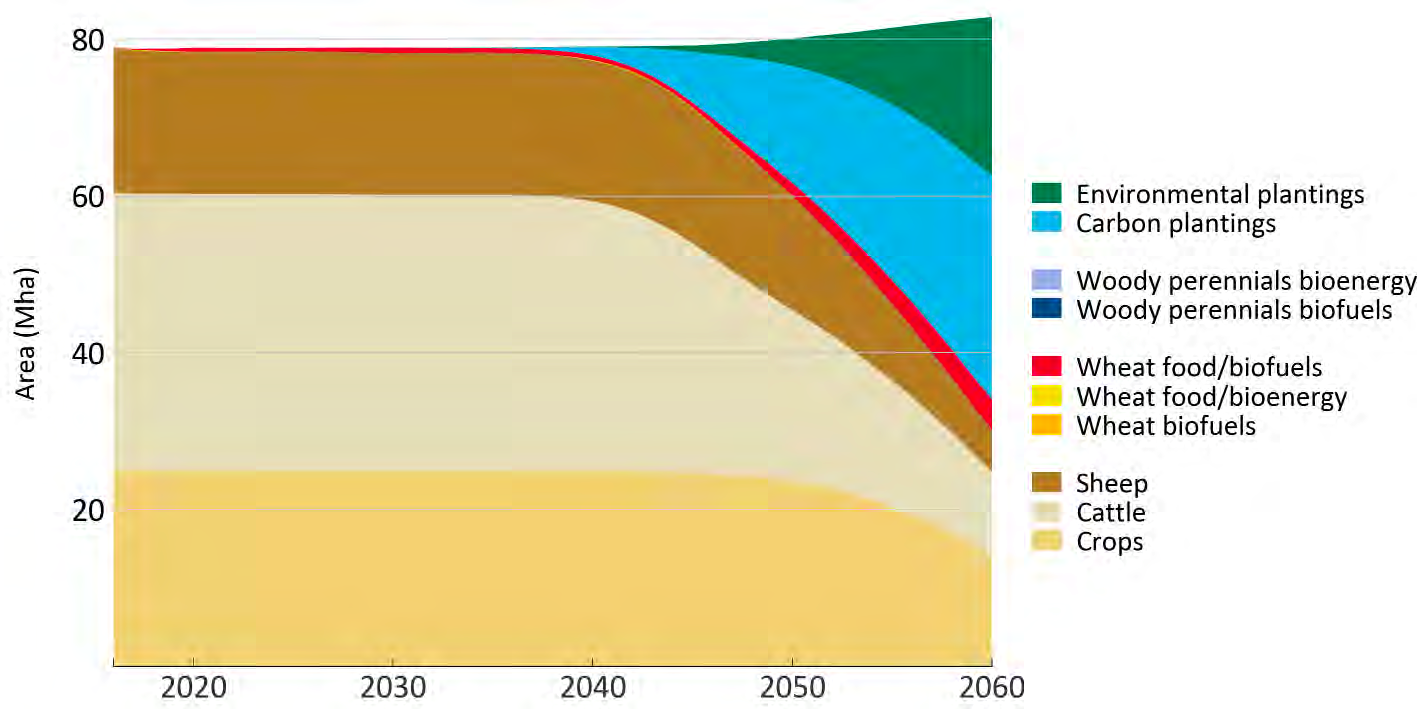
Carbon and environmental plantings on this scale are a significant land use shift, and so require careful planning, consultation and engagement with the community, particularly regional communities. Such considerations will include protecting prime agricultural land for food and fibre production and avoiding adverse effects on water supplies.
Conclusion
CSIRO has produced several of these big picture reports before:
- Future Dilemmas: Options to 2050 for Australia's Population, Technology, Resources and Environment in 2002
- Balancing Act: A Triple Bottom Line Analysis of the Australian Economy in 2005
Where are they now?
The Morrison government has been re-elected despite having a very limited set of policies for change. We need a government with a long-term vision and a willingness to explain convincingly the reasons for change. We should be able to reach a consensus despite there being some losers as well as winners.
Buy a Bundle of Books and Save
This is a great opportunity to do some Christmas shopping. We have decided to reduce the price of our books if they are purchased in a bundle.
Postage costs about $11 but it is free to pick up from South Turramurra.
Contact This email address is being protected from spambots. You need JavaScript enabled to view it. for more information.
Book bundle 1 = $25 ($17.50 for members)
- Field Guide to the Bushland of the Lane Cove Valley +
- Sydney's Natural World +
- Understanding the Weather
This is a saving of $45 (or $31.50 for members)!
Book bundle 2 = $80 ($56 for members)
- Book bundle 1 +
- Rocks and Trees
This is a saving of $50 (or $35 for members)!
2040 – Join the Regeneration
STEP is supporting the screening of the film 2040 at Roseville Cinema. Booking is essential. We need a minimum of 68 bookings before the screening can go ahead. Your payment will be refunded if this number is not reached.
The previous screening organised by Ku-ring-gai Council in July was booked out.
2040 is a hybrid feature documentary that looks to the future, but is vitally important NOW! Award-winning director Damon Gameau (That Sugar Film) embarks on journey to explore what the future could look like by the year 2040 if we simply embraced the best solutions already available to us to improve our planet and shifted them rapidly into the mainstream.
Structured as a visual letter to his 4-year-old daughter, Damon blends traditional documentary with dramatised sequences and high-end visual effects to create a vision board of how these solutions could regenerate the world for future generations.


